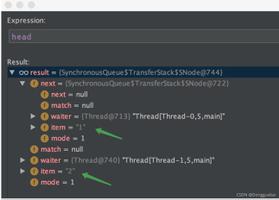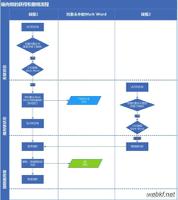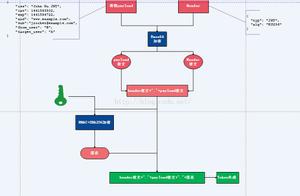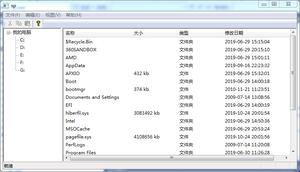java分析CountDownLatch的实现原理

package com.edison; import java.util.Random;
import java.util.Scanner;
import java.util.concurrent.CountDownLatch;
/**
* @ClassName: Main32
* @description:
* @author: edison_Kwok
* @Date: create in 2020/2/20 20:28
* @Version: 1.0
*/public class Main33 {
public static void main(String[] args) {
startTestCountDownLatch();
}
private static void startTestCountDownLatch() {
int threadNum = 10;
final CountDownLatch countDownLatch = new CountDownLatch(threadNum);
for (int i = 0; i < threadNum; i++) {
final int finalI = i + 1;
new Thread(() -> {
System.out.println("thread " + finalI + " start");
Random random = new Random();
try {
Thread.sleep(random.nextInt(10000) + 1000);
} catch (InterruptedException e) {
e.printStackTrace(); } System.out.println("thread " + finalI + " finish");
countDownLatch.countDown(); }).start();
}
try {
System.out.println("我快结束了");
countDownLatch.await(); //上面开启了10个线程进行执行
//该await()方法就会卡在这里,等到上面的线程执行完成,才能够继续执行下面
} catch (InterruptedException e) {
e.printStackTrace();
}
System.out.println(threadNum + " thread finish");
}
}
主线程启动10个子线程后阻塞在await方法,需要等子线程都执行完毕,主线程才能唤醒继续执行。
构造器
CountDownLatch和ReentrantLock一样,内部使用Sync继承AQS。构造函数很简单地传递计数值给Sync,并且设置了state。
Sync(int count) { setState(count);
}
AQS的state,这是一个由子类决定含义的“状态”。对于ReentrantLock来说,state是线程获取锁的次数;对于CountDownLatch来说,则表示计数值的大小。
阻塞线程
接着来看await方法,直接调用了AQS的acquireSharedInterruptibly。
public void await() throws InterruptedException { sync.acquireSharedInterruptibly(1);
}
public final void acquireSharedInterruptibly(int arg) throws InterruptedException {
if (Thread.interrupted())
throw new InterruptedException();
if (tryAcquireShared(arg) < 0)
doAcquireSharedInterruptibly(arg);
}
首先尝试获取共享锁,实现方式和独占锁类似,由CountDownLatch实现判断逻辑。
protected int tryAcquireShared(int acquires) { return (getState() == 0) ? 1 : -1;
}
返回1代表获取成功,返回-1代表获取失败。如果获取失败,需要调用doAcquireSharedInterruptibly:
private void doAcquireSharedInterruptibly(int arg) throws InterruptedException {
final Node node = addWaiter(Node.SHARED);
boolean failed = true;
try {
for (;;) {
final Node p = node.predecessor();
if (p == head) {
int r = tryAcquireShared(arg);
if (r >= 0) {
setHeadAndPropagate(node, r);
p.next = null; // help GC
failed = false;
return;
}
}
if (shouldParkAfterFailedAcquire(p, node) &&
parkAndCheckInterrupt())
throw new InterruptedException();
}
} finally {
if (failed)
cancelAcquire(node);
}
}
doAcquireSharedInterruptibly的逻辑和独占功能的acquireQueued基本相同,阻塞线程的过程是一样的。不同之处:
- 创建的Node是定义成共享的(Node.SHARED);
- 被唤醒后重新尝试获取锁,不只设置自己为head,还需要通知其他等待的线程。(重点看后文释放操作里的setHeadAndPropagate)
释放操作
public void countDown() { sync.releaseShared(1);
}
countDown操作实际就是释放锁的操作,每调用一次,计数值减少1:
public final boolean releaseShared(int arg) { if (tryReleaseShared(arg)) {
doReleaseShared();
return true;
}
return false;
}
同样是首先尝试释放锁,具体实现在CountDownLatch中:
protected boolean tryReleaseShared(int releases) { // Decrement count; signal when transition to zero
for (;;) {
int c = getState();
if (c == 0)
return false;
int nextc = c-1;
if (compareAndSetState(c, nextc))
return nextc == 0;
}
}
死循环加上cas的方式保证state的减1操作,当计数值等于0,代表所有子线程都执行完毕,被await阻塞的线程可以唤醒了,下一步调用doReleaseShared:
private void doReleaseShared() { for (;;) {
Node h = head;
if (h != null && h != tail) {
int ws = h.waitStatus;
if (ws == Node.SIGNAL) {
//1
if (!compareAndSetWaitStatus(h, Node.SIGNAL, 0))
continue; // loop to recheck cases
unparkSuccessor(h);
}
//2
else if (ws == 0 &&
!compareAndSetWaitStatus(h, 0, Node.PROPAGATE))
continue; // loop on failed CAS
}
if (h == head) // loop if head changed
break;
}
}
标记1里,头节点状态如果SIGNAL,则状态重置为0,并调用unparkSuccessor唤醒下个节点。
标记2里,被唤醒的节点状态会重置成0,在下一次循环中被设置成PROPAGATE状态,代表状态要向后传播。
private void unparkSuccessor(Node node) { int ws = node.waitStatus;
if (ws < 0)
compareAndSetWaitStatus(node, ws, 0);
Node s = node.next;
if (s == null || s.waitStatus > 0) {
s = null;
for (Node t = tail; t != null && t != node; t = t.prev)
if (t.waitStatus <= 0)
s = t;
}
if (s != null)
LockSupport.unpark(s.thread);
}
在唤醒线程的操作里,分成三步:
- 处理当前节点:非CANCELLED状态重置为0;
- 寻找下个节点:如果是CANCELLED状态,说明节点中途溜了,从队列尾开始寻找排在最前还在等着的节点
- 唤醒:利用LockSupport.unpark唤醒下个节点里的线程。
线程是在doAcquireSharedInterruptibly里被阻塞的,唤醒后调用到setHeadAndPropagate。
private void setHeadAndPropagate(Node node, int propagate) { Node h = head;
setHead(node);
if (propagate > 0 || h == null || h.waitStatus < 0 ||
(h = head) == null || h.waitStatus < 0) {
Node s = node.next;
if (s == null || s.isShared())
doReleaseShared();
}
}
setHead设置头节点后,再判断一堆条件,取出下一个节点,如果也是共享类型,进行doReleaseShared释放操作。下个节点被唤醒后,重复上面的步骤,达到共享状态向后传播。
要注意,await操作看着好像是独占操作,但它可以在多个线程中调用。当计数值等于0的时候,调用await的线程都需要知道,所以使用共享锁。
限定时间的await
CountDownLatch的await方法还有个限定阻塞时间的版本.
public boolean await(long timeout, TimeUnit unit) throws InterruptedException {
return sync.tryAcquireSharedNanos(1, unit.toNanos(timeout));
}
跟踪代码,最后来看doAcquireSharedNanos方法,和上文介绍的doAcquireShared逻辑基本一样,不同之处是加了time字眼的处理。
private boolean doAcquireSharedNanos(int arg, long nanosTimeout) throws InterruptedException {
if (nanosTimeout <= 0L)
return false;
final long deadline = System.nanoTime() + nanosTimeout;
final Node node = addWaiter(Node.SHARED);
boolean failed = true;
try {
for (;;) {
final Node p = node.predecessor();
if (p == head) {
int r = tryAcquireShared(arg);
if (r >= 0) {
setHeadAndPropagate(node, r);
p.next = null; // help GC
failed = false;
return true;
}
}
nanosTimeout = deadline - System.nanoTime();
if (nanosTimeout <= 0L)
return false;
if (shouldParkAfterFailedAcquire(p, node) &&
nanosTimeout > spinForTimeoutThreshold)
LockSupport.parkNanos(this, nanosTimeout);
if (Thread.interrupted())
throw new InterruptedException();
}
} finally {
if (failed)
cancelAcquire(node);
}
}
进入方法时,算出能够执行多久的deadline,然后在循环中判断时间。注意到代码中间有句:
nanosTimeout > spinForTimeoutThresholdstatic final long spinForTimeoutThreshold = 1000L;spinForTimeoutThreshold写死了1000ns,这就是所谓的自旋操作。当超时在1000ns内,让线程在循环中自旋,否则阻塞线程。
总结
两篇文章分别以ReentrantLock和CountDownLatch为例研究了AQS的独占功能和共享功能。
以上是 java分析CountDownLatch的实现原理 的全部内容, 来源链接: utcz.com/z/513799.html









